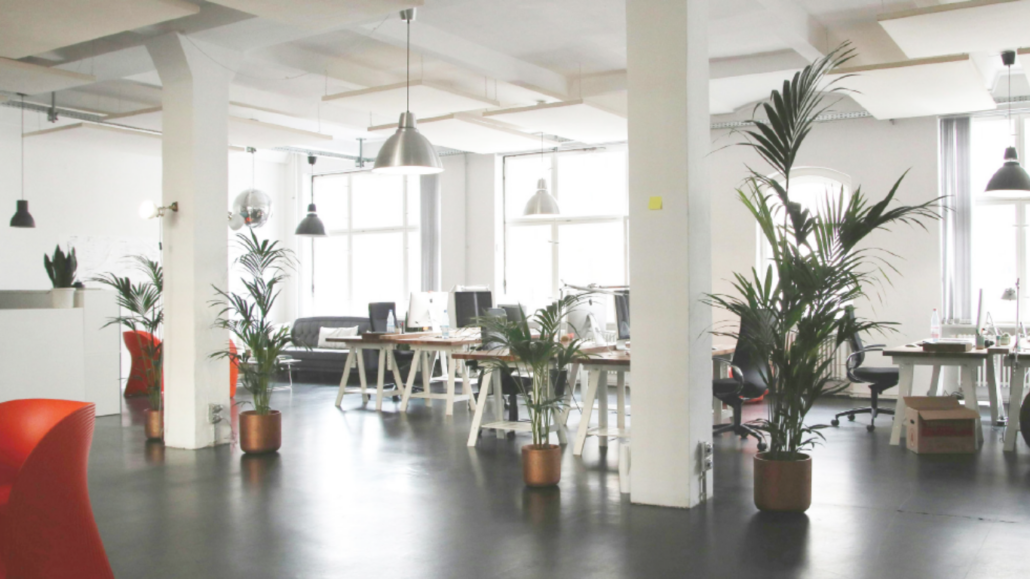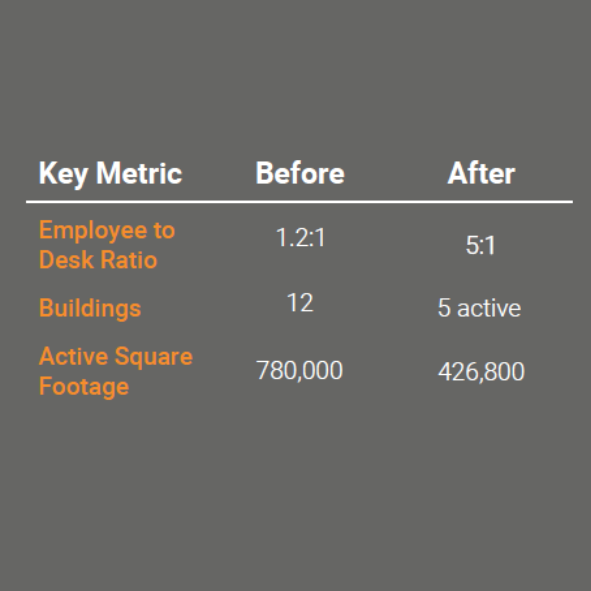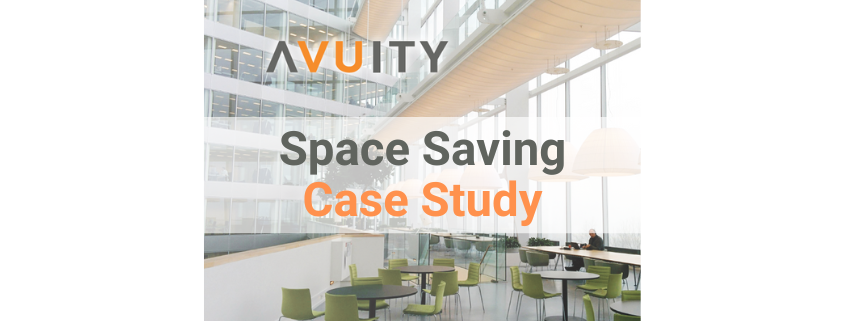Space Saving Case Study
Download the full Space Saving Case Study as a PDF here.
A national health insurance provider engaged AVUITY to better understand space utilization across their office campus. The company occupied 780,000 square feet across twelve buildings in two markets at the time of the initial engagement. Sensors were installed across two sites to collect actionable data. Before the pandemic, the company maintained a 1.2 employee to 1 desk ratio and daily occupancy was as follows:
- Location A averaged daily attendance of 2,000-2,500 employees
- Location B averaged daily attendance of 400-600 employees
After closing for over a year at the beginning of the COVID-19 pandemic, this client adopted a hybrid work philosophy. With the increased flexibility, utilization of the space has dropped ~75% from 2019 levels. Current occupancy at the two sites is:
- Location A averages daily attendance of 450 employees
- Location B averages daily attendance of 50 employees
Within the occupancy numbers, approximately half of the onsite staff consists of employees who work with specialized equipment or have other reasons they must work onsite daily. The other half of the occupants come to the site to collaborate, attend specific meetings, or prefer to work in the office. The company does not incentivize or require onsite presence for employees whose work does not require it.

What did they gain by engaging AVUITY?
The client heavily relied on AVUITY data to inform two significant decisions. Firstly, they substantially reduced their office portfolio’s total square footage, decreasing it from 780,000 square feet to 426,800 square feet. Out of the initial 780,000 square feet, 353,200 were vacated or darkened. They also decreased the number of buildings from twelve to seven, with three of the remaining seven currently vacant.
This decision, reducing total square footage by 42% and active square footage by 53%, was mainly motivated by the decrease in employee attendance. While reducing the overall size of the office portfolio was a straightforward choice, the specific depth of the cuts and which areas to cut were where AVUITY’s data and analytics proved crucial.
AVUITY data pinpointed buildings, floors, and area types with particularly poor utilization, as well as space types with the highest utilization rates. This analysis empowered the client’s real estate team to confidently sub-lease and vacate more square footage than they would have been able to without the data.
Second, the client was able to materially change the office design. Using AVUITY sensors, the client was able to better understand the most heavily trafficked areas under the new hybrid policy. AVUITY sensors highlighted that workstations with specialized equipment and collaboration areas were the most heavily utilized while general workstations were very poorly utilized.
This resulted in a change in the employee-to-desk ratio from 1.2 to 1 in 2019 to 5 to 1 in 2023 as well as an overall increase in the mix of collaboration space. In particular, the client noticed that employees tended to gather in “barbell” size groups. There was regular collaboration among groups of 2 to 3 employees, limited gatherings of 4 to 10 employees, and significant occurrences of large gatherings with 10+ employees. The new space is specifically designed to handle these types of gatherings with an increase in the number of larger bookable conference rooms, a reduction in small meeting rooms, and increased availability of “social space” where large teams can gather in person.

This national healthcare provider has achieved a considerable decrease in occupancy expenses. AVUITY technology provided support for their findings and new strategy. The client has reduced the allocation of workstations from a ratio of 1.2:1 (workstations per employee) to 1:5.
What’s the bottom-line outcome?

The base rent comparison in the market for buildings similar to those the client occupies is $36.44 per square foot. Using that rate, by vacating 180,000 square feet, the client is saving over $6.5 million annually. The space savings alone, excluding any operating cost savings, represents a 1,343% return on investment when compared to the cost of AVUITY’s sensors. The client also saved an estimated $3 per square foot on operating costs in the dark and vacated buildings, representing an additional 217% return on investment on top of the rent savings, for a total return of 1,560%.
In addition, the client has delivered a more usable space for the employees by converting individual workstations to larger meeting spaces. Reach out to us for a personalized demo and uncover the potential for replicating these results within your own organization.
A national healthcare provider is saving over $6.5 million in rent expenses annually by reducing space usage with the help of AVUITY.




Leave a Reply
Want to join the discussion?Feel free to contribute!